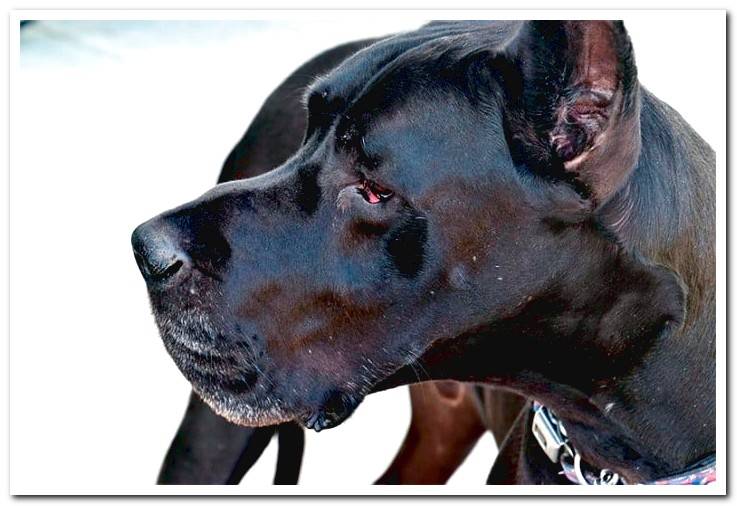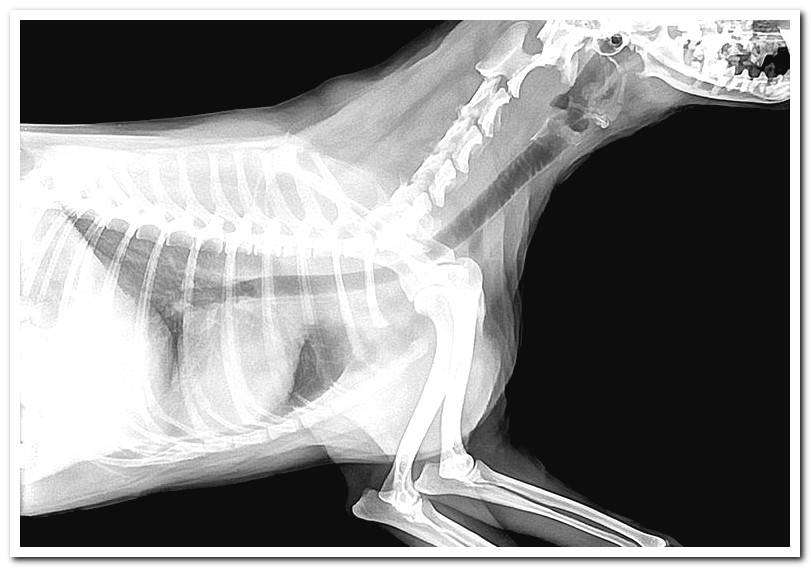
Also known by the name of cervical spondylomyelopathy, this pathology is due to compression of the marrow at the cervical level. Wobbler syndrome occurs from different causes. It is a chronic disease that progresses slowly.
There is still a great lack of knowledge around the causes and conditions that are involved in this disorder, but veterinary attention and conservative or surgical treatment are needed. Let’s see in detail everything related to this curious syndrome.
Index of contents
- 1 Why does Wobbler syndrome occur?
- 2 Wobbler syndrome symptoms
- 3 What breeds have Wobbler Syndrome?
- 4 How is Wobbler syndrome diagnosed?
- 5 Treatment of cervical spondylomyelopathy
- 6 Conservative treatment of cervical spondylomyelopathy
- 7 Surgical treatment of cervical spondylomyelopathy
- 7.1 Surgery complications for cervical spondylomyelopathy
- 8 What is the prognosis for cervical spondiomyelopathy?
Why does Wobbler syndrome occur?
This disease occurs when compression of the cord occurs. It happens for various reasons, with greater or lesser severity. It usually originates from narrowing of the spinal canal, chronic cervical protrusion of intervertebral discs, and degeneration of these discs.
Too vertebral malformations can be found ligament hypertrophy or arthrosis in joints vertebral. In any case, it is not clear why it is triggered. A congenital, conformational, nutritional origin is considered or is associated with certain races such as the Doberman or exercises.

Wobbler syndrome symptoms
We must suspect that our dog suffers from Wobbler syndrome if we appreciate one or more of these symptoms. In this case, it should always be the vet who confirms the diagnosis.
- Wobbly march.
- Lack of coordination.
- Paresis, which is mild or partial paralysis.
- Pain in the cervical area.
- Lameness in the front or rear legs.
- Loss of sensation in the hind legs.
- Muscular atrophy.
What breeds have Wobbler Syndrome?
This disease is more frequent in large and middle-aged dogs, specifically, between four and eight years old. There does not appear to be a sexual predisposition. Two races stand out as the most affected. Are the Doberman and the Great Dane. Another risk group is young or young adults of large or giant breeds from six months.
How is Wobbler syndrome diagnosed?
The diagnostic protocol happens because the veterinaryn draws up a complete clinical history of the dog that includes, in addition to age and breed, when it started and how the clinical picture has evolved. Comprehensive neurological and orthopedic exams are basic. X-rays can help, especially to rule out other pathologies.
A myelography can be done, which uses a contrast to observe the marrow, or a CT scan, which is more specific, but cannot provide much more information than myelography. It does offer a higher resolution. For this reason, a combination of both techniques is preferred as a diagnostic test, which is myeloTAC.
This enhances the diagnostic advantages of both techniques. On the other hand, MRI or MRI is also a good option. These last mentioned tests require veterinaryns and specialized centers. Despite its specificity, the results must always be interpreted together with the medical history and the examination carried out by the veterinaryn.
Treatment of cervical spondylomyelopathy
The treatment of this disease is adjusted to the symptoms it has produced and the evolution of the clinical picture. Therefore, there is no single treatment to apply in all cases. A conservative or surgical approach may be chosen.
Conservative treatment of cervical spondylomyelopathy
It is based on keeping the dog in absolute rest, confined and administering anti-inflammatories and pain relievers. These guidelines should be followed for four to six weeks. The dog can then begin exercising little by little. This approach is recommended when the dog has started symptoms after suffering light trauma.
Also for those specimens that are still growing, in which nutritional imbalances may occur, such as an excess in the caloric intake. In contrast, this treatment is not recommended if the dog has neurological disorders in all four legs. Nor if bone problems have been detected.
Surgical treatment of cervical spondylomyelopathy
If the intervention is chosen, the veterinaryn will have to assess which surgical technique is the most appropriate, since several are available. The decision is made taking into account the symptoms, the neurological examination and the results of the imaging tests. In anyone, the success rate is high.
But there can be postoperative complications and recurrence. Further, the recovery period can take up to four months and the handling is not easy, more in the case of usually large dogs. The objective of all of them is both direct and indirect decompression. If this is not achieved, the dog will not improve.
Surgery complications for cervical spondylomyelopathy
Complications can arise in the surgery itself, since all interventions with general anesthesia have their risks. Respiratory compromise, heart problems, or bleeding would be among the most common complications. During the postoperative period, infections, abscesses, seroma, migration or failure of implants, etc., may appear.
What is the prognosis for cervical spondiomyelopathy?
This sickness it is not fatal but it does considerably affect the quality of life, which is what you have to value. Thus, there is talk of a period of about four years in which the symptoms can be controlled.
But, regardless of the treatment chosen, the progression of this disease is unpredictable. Some dogs get worse quickly, while others respond very well to treatment.
